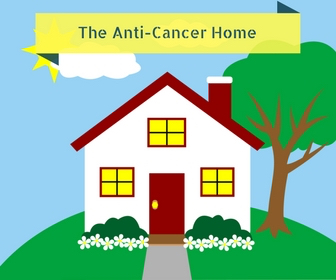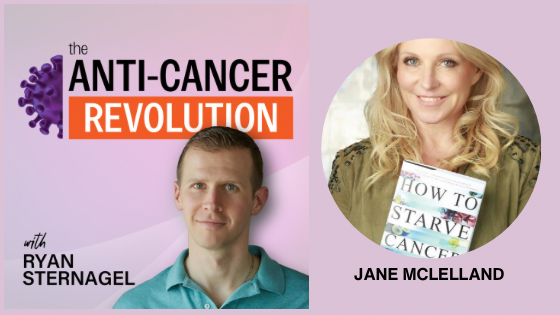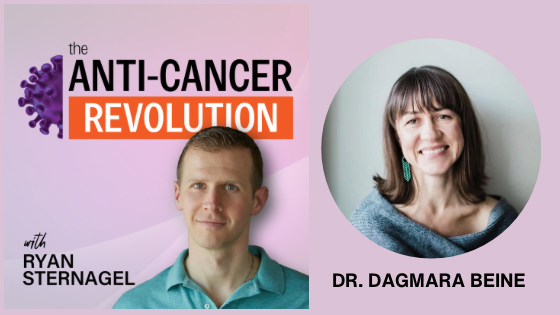[sc name=”SquareOne”]
Many parents whose child is undergoing chemotherapy will want to understand what they can do to help their child cope with the side effects. In this article we’ll discuss mitigating side effects from one of the more common chemotherapy drugs used in pediatric cancers: Vincristine.
What is Vincristine?
Vincristine is an anti-cancer (“antineoplastic” or “cytotoxic”) chemotherapy drug. Vincristine belongs to a class of chemotherapy drugs called plant alkaloids. Plant alkaloids are made from plants. The vinca alkaloids are made from the periwinkle plant (catharanthus rosea). The plant alkaloids are cell-cycle specific. This means they attack the cells during various phases of division.
Antimicrotubule agents (such as Vincristine), inhibit the microtubule structures within the cell. Microtubules are part of the cell’s apparatus for dividing and replicating itself. Inhibition of these structures ultimately results in cell death.
Cancers treated with Vincristine include: acute leukemia, Hodgkin’s and non- Hodgkin’s lymphoma, neuroblastoma, rhabdomyosarcoma, Ewing’s sarcoma, Wilms’ tumor, multiple myeloma, chronic leukemias, thyroid cancer, and brain tumors.
Vincristine Insert
The following are potential side effects for patients taking Vincristine:
- Hair loss – may be partial or complete hair loss
- Constipation
- Low blood counts. Your white and red blood cells and platelets may temporarily decrease. This can put you at increased risk for infection, anemia and/or bleeding.
- Abdominal cramps
- Weight loss
- Nausea and vomiting
- Mouth sores
- Diarrhea
- Loss of appetite
- Taste changes
- Peripheral neuropathy: a serious side effect of decreased sensation and paresthesia (numbness and tingling of the hands and feet) may be noted. Sensory loss, numbness and tingling, and difficulty in walking may last for at least as long as therapy is continued. These side effects may become progressively more severe with continued treatment, and your doctor may decide to decrease your dose.
- Ptosis (drooping or falling of the upper eyelid) and/or Ophthalmoplegia (paralysis or weakness of one or more of the muscles that control eye movement.)Other chemotherapy drugs that can cause peripheral neuropathy include cisplatin, paclitaxel, and the podophyllotoxins (etoposide and tenoposide). Other drugs used to treat cancer such as thalidomide and interferon also can cause peripheral neuropathy.
What can be done about chemotherapy induced peripheral neuropathy?
Two drugs often used to treat neuropathy are the “GABA analogues”: preGABAlin (Lyrica) and GABApentin (Neurontin).
It is advised to ask your doctor about both the short and long-term side effects of these drugs in children. For those interested in hearing stories directly from patients who have used these medications, here is one resource:
http://patient.info/forums/discuss/browse/gabapentin-2824
http://patient.info/forums/discuss/browse/pregabalin-3112
Rather than first resorting to medications, some may be interested in learning how they may be able to improve GABA levels naturally….
What is GABA?
GABA (Gamma-aminobutyic acid) is an inhibitory neurotransmitter that has a calming effect on the brain and body.
Your gastrointestinal tract is packed with GABA receptors and it is critical for contraction of the bowel. Insufficient levels can result in abdominal pain, constipation, and impaired transit (more on this later).
Insufficient levels of GABA result in nervousness, anxiety and panic disorders, aggressive behavior, decreased eye-contact and anti-social behavior, attention deficit, problems with eye-focusing (like that seen in autistic children when both eyes are focused inward towards the nose or waver back and forth in a horizontal or vertical movement), chronic pain syndromes and much more. It may also contribute to GERD as it is needed to help regulate the lower part of the esophagus.
Glutamate (also referred to as glutamic acid) is actually the precursor to gamma-aminobutyric acid, and any excess is supposed to be converted automatically into GABA. This is the way it maintains balance; anytime glutamate levels start to build up too high, then it is converted to GABA to calm things down.
An enzyme called glutamic acid decarboxylase (GAD) is needed for glutamate to make the conversion to GABA, but there are several factors that may interfere with this enzyme and impede the conversion process, which means a build-up of glutamate and inhibited formation of GABA.
The syntheses of GABA itself is dependent on the Krebs cycle, so it is vital in more ways than one that this system be working properly to have sufficient levels. The Krebs cycle can become impaired in a variety of ways like deficiency in B vitamins or the presence of heavy metals, and toxins from bacteria or Candida.
The GAD enzyme is generated by the pancreas, so problems with the pancreas may impair production of the enzyme.
Vitamin B6 is also needed as a cofactor with GAD to convert glutamate into GABA, so if B6 levels are not sufficient, the conversion won’t happen either. Much of the population is deficient in B6.
The amino acid taurine increases the GAD enzyme and consequently GABA levels. Additionally taurine doubles as an inhibitory neurotransmitter and can bind directly to GABA receptors, so it can help provide balance naturally in that manner as well. Higher levels of any inhibitory neurotransmitter help lower high levels of any excitatory neurotransmitter. Taurine is found in high levels in the brain and cardiac tissue, indicating its importance in these areas. Taurine is found most abundantly in seafood and animal protein; ironically many cancer patients will switch to a vegetarian / vegan diet further exacerbating a taurine deficiency.
In addition one study found a 35% reduction in taurine levels following one month of intensive chemotherapy and/or radiation!
Taurine deficiency after intensive chemotherapy and/or radiation. https://www.ncbi.nlm.nih.gov/pubmed/1550047
A very thorough summary of optimizing GABA levels can be found here.
So, if Glutamine, Vitamin B6 and Taurine are necessary for optimal GABA levels, does the research support their use in treating / mitigating neuropathy?
In fact, there is research to support the use of EACH of these as a stand-alone in the treatment of neuropathy. A brief summary of that research is below:
[sc name=”GMOs Revealed”]
Research on Glutamine and Chemotherapy Induced Neuropathy
From “Oral glutamine is effective for preventing oxaliplatin-induced neuropathy in colorectal cancer patients.” in The Oncologist https://www.ncbi.nlm.nih.gov/pubmed/17405895
“These data indicate that oral glutamine significantly reduces the incidence and severity of peripheral neuropathy of MCRC patients receiving oxaliplatin without affecting response to chemotherapy and survival.”
From “Glutamine for the treatment of vincristine-induced neuropathy in children and adolescents with cancer.” in Supportive Care in Cancer https://www.ncbi.nlm.nih.gov/pubmed/27830395
“Glutamine supplementation is well tolerated and associated with improvements in sensory function and self-reported overall quality of life.”
Bonus Glutamine benefits:
Glutamine has also been found effective in reducing chemotherapy-induced mucositis and gastrointestinal toxicity. Intravenous glutamine significantly reduced chemotherapy-induced nausea, vomiting, and diarrhea in patients with gastric or colorectal cancer. https://www.mskcc.org/cancer-care/integrative-medicine/herbs/glutamine
Research on Vitamin B6 (Pyridoxine) on Vincristine Chemotherapy Induced Neuropathy and Ptosis
From “Bilateral Eyelid Ptosis, Attributed to Vincristine, Treated Successfully with Pyridoxine and Thiamine in a Child with Acute Lymphoblastic Leukemia” in Toxicology International https://www.ncbi.nlm.nih.gov/pubmed/26862280
“Complete recovery of ptosis was noticed 4 weeks after the initiation of Vitamins B1 and B6 supplementation therapy.”
From “Vincristine-Induced Neuropathy Presenting as Ptosis and Ophthalmoplegia in a 2-Year-Old Boy” in Journal of Pediatric Ophthalmology and Strabismus https://www.ncbi.nlm.nih.gov/pubmed/26176228
“Successfully treated with pyridoxine and pyridostigmine”
Pyridoxine and pyridostigmine treatment in vincristine-induced neuropathy https://www.ncbi.nlm.nih.gov/pubmed/17710662
“The patient seemed to benefit from pyridoxine and pyridostigmine therapy greatly and this therapy is recommended in patients with severe vincristine-induced neuropathy.”
More studies on the Vincristine – Ptosis link:
“Vincristine-induced unilateral ptosis: case report and review of the literature” in Journal Francais d’Opthalmologie https://www.ncbi.nlm.nih.gov/pubmed/23896211
“Vincristine-induced unilateral ptosis in a child” in Pediatric Neurology https://www.ncbi.nlm.nih.gov/pubmed/19931172
Research on Taurine and Neuropathy
“Taurine ameliorates neuropathy via regulating NF-κB and Nrf2/HO-1 signaling cascades in diabetic rats.” In Food and Chemical Toxicology https://www.ncbi.nlm.nih.gov/pubmed/24907624
“Taurine counteracts oxidative stress and nerve growth factor deficit in early experimental diabetic neuropathy.” In Experimental Neurology https://www.ncbi.nlm.nih.gov/pubmed/11681853
“Depletion of taurine in experimental diabetic neuropathy: implications for nerve metabolic, vascular, and functional deficits.” In Experimental Neurology https://www.ncbi.nlm.nih.gov/pubmed/11259114
Additional Research on Taurine: Making Chemotherapy more Effective and Reducing other Side Effects!
From “Further elucidation of mechanism of resistance to vincristine in myeloid cells: role of hypochlorous acid in degradation of vincristine by myeloperoxidase.” In Leukemia https://www.ncbi.nlm.nih.gov/pubmed/10637476
“Taurine may help augment vincristine effectiveness in leukemia by inhbiting hypochlorus acid degradation of vincristine.”
From “Synergism and attenuation effects of taurine on cyclophosphamide” in Chinese Journal of Cancer https://www.ncbi.nlm.nih.gov/pubmed/19619437
“Taurine has synergism and attenuation effects on cyclophosphamide via both intravenous and intragastric administration.”
From “Effect of taurine on leucocyte function.” In European Journal of Pharmacology https://www.ncbi.nlm.nih.gov/pubmed/19490912
“In conclusion, taurine can enhance the function of the leucocyte after chemotherapy of cyclophosphamide.”
From “Effect of taurine on attenuating chemotherapy-induced adverse effects in acute lymphoblastic leukemia.” In Journal of Cancer Research and Therapeutics https://www.ncbi.nlm.nih.gov/pubmed/26148612
“The results indicated that the levels of white blood cells were significantly (P < 0.05) increased in taurine treated group; Taurine administration improved liver and kidney functions, indicated by decline of serum bilirubin, transaminases, urea, and creatinine, respectively in comparison to the controls”
And finally:
“Taurine attenuates chemotherapy-induced nausea and vomiting in acute lymphoblastic leukemia.” In Amino Acids https://www.ncbi.nlm.nih.gov/pubmed/25323734
And if you needed more evidence to convince you that supporting GABA might be a good idea:
Mechanisms of vincristine-induced neurotoxicity: Possible reversal by erythropoietin. https://www.ncbi.nlm.nih.gov/pubmed/22466243
“These results suggested that VCR might cause increased nerve excitability and induce a state of glutamate excitotoxicity through enhancing NMDA receptor expression and diminishing CGRP expression, thus resulting in axonal degeneration. EPO had an obvious neuroprotective effect probably through decreasing NMDA receptor expression and increasing CGRP expression both centrally and peripherally.”
CASE STUDY
Matthew was diagnosed with Stage 3 Embryonal Rhabdomyosarcoma of the liver / bile duct just days after his second birthday in May 2016. In early June, Matthew began an intensive chemotherapy regimen which included VAC (Vincristine, Dactinomycin, Cyclophosphamide) pulsed with VI (Vincristine / Irinotecan). Matthew’s bile duct was blocked by the tumor for the first several weeks of therapy; as such he was not able to metabolize and clear the chemotherapy agents as one would normally. He experienced extreme neuropathic side effects including: pain in hands and feet, muscle weakness (was unable to walk), ptosis, lazy / wandering eyes and even delayed gastric emptying due to vagus nerve damage.


In mid-August one of our oncologists suggested GABApentin to help with the neuropathy. Not being comfortable with the potential short and long term side effects of the drug in such a young child, I decided to do whatever I could to support his body’s own healing processes.
Working with a naturopathic oncologist, together we devised the supplementation protocol outlined below:
Matt’s Neuropathy Stack
Glutamine: 3 to 6 grams per day (more on days immediately after chemo to also help repair the mucous membranes and mitigate mucositis)
Taurine: 500mg – 1000mg per day (500mg is about what you would find in a 4 ounce piece of salmon).
Thorne B Complex #12: 1 capsule per day (B vitamins are typically required more in times of stress and B1, B6 and B12 have been specifically shown to help with neuropathy).
Vit B6 (as P5P) – 50 mg per day (for additional B6: ATTENTION: long term, high dose B6 supplementation has been shown to actually CAUSE neuropathic symptoms; so some cautious here is warranted. Strategically cycling off supplementation for a few days a month may be a good strategy. As Matthew’s symptoms abated, I reduced supplementation to only a couple days a week.
It is strongly advised to work with a trained Naturopathic Oncologist and/or Functional Medical Doctor to tailor a proper supplementation and dosage protocol for your unique situation.
Additional adjuncts which may help:
R-Alpha Lipoid Acid: 50-100 mg per day
Omega 3 (high quality EPA and DHA)
Vitamin E: whole food source of all 8 isomers (alpha, beta, gamma, and delta tocopherol and the corresponding tocotrienols), such as found here: https://botanicalcraft.com/)
CBD (Cannabidiol)
Acupuncture (due to Matt’s age, we did not pursue this option)

By the end of November, all of Matthew’s neuropathic symptoms had resolved and he had even started walking again! Admittedly, part of this was helped by the tumor’s response to the chemotherapy, unblocking the bile duct and allowing the vincristine to be properly metabolized and excreted from the body. However, most Chemotherapy Induced Peripheral Neuropathies are length and dose dependent neuropathies. Fortunately, Matthew’s symptoms have abated, despite continuing treatment – he has not missed or delayed a single treatment!
I would just like to reiterate that everybody’s situation is unique. Please talk with your doctor before embarking on any supplementation regimen. Also, an experienced naturopathic oncologist can be an invaluable resource. You can find one here: https://oncanp.org/
-Scott Chaverri
New writer for MKCC! Like Ryan, Scott is a “dadcologist” who was already interested in natural health and began hitting the books (and studies) hard when his son was diagnosed.
Disclaimer: The statements made here have not been approved by the Food and Drug Administration. These statements are not intended to diagnose, treat or cure or prevent any disease. This notice is required by the Federal Food, Drug and Cosmetic Act.
Additional Disclaimer: Scott is not a doctor, just a dad who likes to read studies, and everything he has written here is for informational purposes only and should not be construed as medical advice. He strongly encourages you to consult with your healthcare professional before making any decisions pertaining to your or your child’s health.








